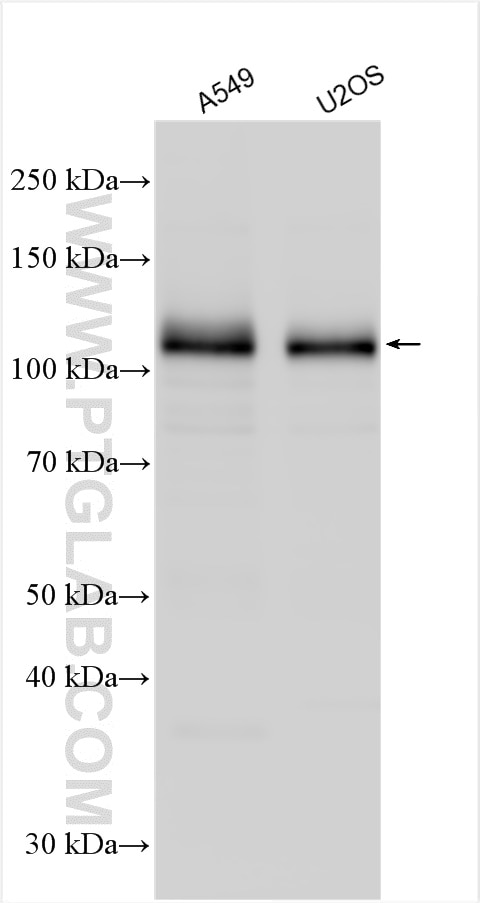DCBLD2 Polyklonaler Antikörper
DCBLD2 Polyklonal Antikörper für WB, ELISA
Wirt / Isotyp
Kaninchen / IgG
Getestete Reaktivität
human
Anwendung
WB, ELISA
Konjugation
Unkonjugiert
Kat-Nr. : 30245-1-AP
Synonyme
Galerie der Validierungsdaten
Geprüfte Anwendungen
| Erfolgreiche Detektion in WB | A549-Zellen, U2OS-Zellen |
Empfohlene Verdünnung
| Anwendung | Verdünnung |
|---|---|
| Western Blot (WB) | WB : 1:1000-1:6000 |
| It is recommended that this reagent should be titrated in each testing system to obtain optimal results. | |
| Sample-dependent, check data in validation data gallery | |
Produktinformation
30245-1-AP bindet in WB, ELISA DCBLD2 und zeigt Reaktivität mit human
| Getestete Reaktivität | human |
| Wirt / Isotyp | Kaninchen / IgG |
| Klonalität | Polyklonal |
| Typ | Antikörper |
| Immunogen | DCBLD2 fusion protein Ag32823 |
| Vollständiger Name | discoidin, CUB and LCCL domain containing 2 |
| Berechnetes Molekulargewicht | 775 aa, 89 kDa |
| Beobachtetes Molekulargewicht | 120 kDa |
| GenBank-Zugangsnummer | BC029658 |
| Gene symbol | DCBLD2 |
| Gene ID (NCBI) | 131566 |
| Konjugation | Unkonjugiert |
| Form | Liquid |
| Reinigungsmethode | Antigen-Affinitätsreinigung |
| Lagerungspuffer | PBS mit 0.02% Natriumazid und 50% Glycerin pH 7.3. |
| Lagerungsbedingungen | Bei -20°C lagern. Nach dem Versand ein Jahr lang stabil Aliquotieren ist bei -20oC Lagerung nicht notwendig. 20ul Größen enthalten 0,1% BSA. |
Hintergrundinformationen
DCBLD2, also known as ESDN or CLCP1, was first identified from human coronary arterial cells by a signal sequence trap method. DCBLD2 regulates proliferation, migration, and invasion in various tumors, including glioma, hypopharyngeal squamous cell carcinoma, and myxofibrosarcoma. The human DCBLD2 protein has a predicted molecular mass of ∼80 kDa based on its amino acid sequence, although it regularly displays an effective molecular mass of ∼130 kDa via SDS-PAGE (PMID: 30902898).
Protokolle
| Produktspezifische Protokolle | |
|---|---|
| WB protocol for DCBLD2 antibody 30245-1-AP | Protokoll herunterladen |
| Standard-Protokolle | |
|---|---|
| Klicken Sie hier, um unsere Standardprotokolle anzuzeigen |


